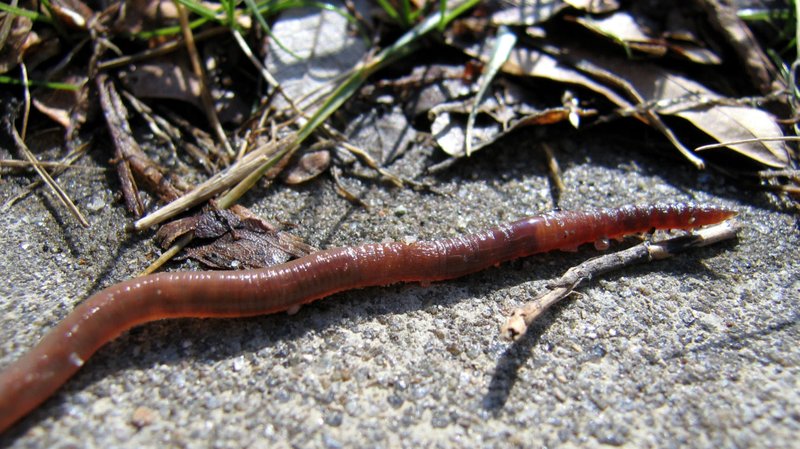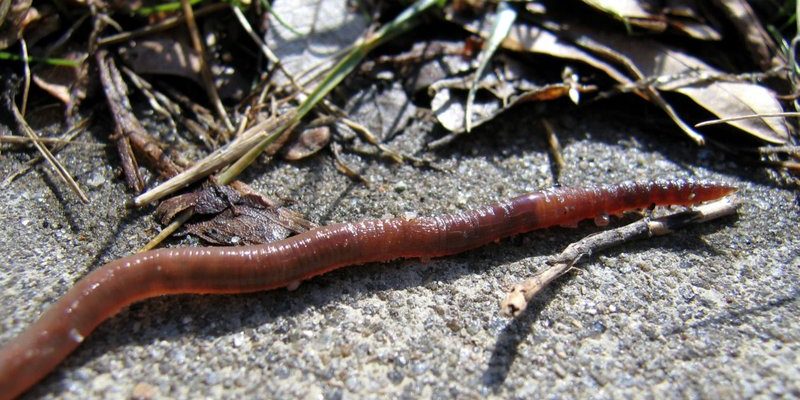
Earthworms are fascinating little creatures that play a crucial role in our ecosystem. They aerate the soil, help in decomposition, and contribute to overall soil health. So, while they might seem like just a soggy nuisance on rainy days, they’re actually doing their part. But with the ground getting saturated, it’s not just the worms who are feeling the push to emerge; it’s also about survival.
Let’s dig deeper into this topic, unpacking why earthworms come to the surface during heavy rain, how they manage to survive in wet conditions, and what this means for the environment.
Why Do Earthworms Surface During Rain?
You might be wondering, “What’s the actual reason why earthworms come out when it rains?” Here’s the thing: earthworms breathe through their skin. They absorb oxygen and get rid of carbon dioxide like we do, but they’ve got a few limitations. When the soil becomes saturated, it can fill up with water, displacing the oxygen. Faced with a lack of oxygen, earthworms seek relief by surfacing.
As the rain pours down, the soil gets compacted and full of water, making it hard for earthworms to survive below. It’s like trying to breathe underwater for us! So, to get fresh air, they venture out into the open. You might find them crawling along sidewalks or even on roads, sometimes even in droves.
How Do Earthworms Manage Wet Conditions?
Earthworms have a slick, moist skin that allows them to stay hydrated, but too much water can be dangerous. Think of it like a sponge—when it gets too soggy, it loses its effectiveness. So, while it’s essential for earthworms to come to the surface for air, they also have to be careful not to drown.
When they are on the surface, earthworms take in oxygen through their skin and can even absorb some water. However, extended exposure to rain can be risky. Their skin needs to stay moist, but if they’re in standing water for too long, they can suffocate or experience stress. So, it’s a bit of a balancing act for these little guys.
The Benefits of Surfacing
Now, you might be curious if there are any benefits to this behavior beyond just survival. You bet there are! When earthworms surface, they help to spread nutrients around. As they move through the soil, they break down organic matter, which creates richer soil. So, even though they’re just trying to catch a breath, they’re also making the ground more fertile.
Additionally, their surfacing can help to aerate the soil in a broader sense. When a lot of worms come up to the surface, they may inadvertently create tunnels that allow air, water, and nutrients to travel more freely through the soil. This is beneficial for plants and other organisms living in the soil as well.
What Happens to Earthworms After the Rain?
After the downpour, you might see the ground littered with worms that didn’t make it back. Unfortunately, they can’t always find their way back to safety. If the sun comes out too hot or strong, or if the winds dry things up, the worms can quickly dehydrate. You might find yourself on a mission to rescue them by returning them to the damp earth!
If they do find their way back, they’ll burrow into the soil, where they can enjoy the rich, nutrient-filled environment. They’re skilled at creating homes underground, where they can live happily, munching on decomposing leaves and organic matter.
The Role of Earthworms in the Ecosystem
Now that we understand a bit about why they surface during rain, it’s essential to appreciate **why earthworms are so important to ecosystems**. Earthworms are like nature’s tillers; they contribute significantly to soil structure and help in the decomposition process. Here are some ways they make an impact:
- Soil Aeration: Their burrowing habits allow for better airflow in the soil, which benefits plant roots.
- Nutrient Cycling: As they break down organic material, they release nutrients that are crucial for plant growth.
- Water Retention: Their tunnels help water penetrate deeper into the ground, making it available to plants.
In a nutshell, earthworms are vital players in maintaining a healthy ecosystem. They help foster plant growth, improve soil quality, and contribute to a balanced environment.
Protecting Earthworms and Their Habitat
It’s clear that these squiggly friends play a big role in our ecosystem. But what can we do to protect them? Many of the hazards they face stem from human activities. Here are some things to consider if you want to help preserve earthworm habitats:
- Avoid Chemical Pesticides: These can harm earthworm populations and disrupt their lifecycle.
- Conserve Soil: Practice sustainable gardening by incorporating compost and reducing the use of artificial fertilizers.
- Water Smart: When watering gardens, avoid over-saturation, which can push them to the surface unnecessarily.
By being mindful of our gardening practices and respecting natural habitats, we can help minimize the risks for our slimy friends.
So, the next time you see those earthworms surfacing during a rainstorm, you’ll know they’re just trying to take a breath and survive. Their behavior is a fascinating testament to how creatures adapt to their environment. **Earthworms**, with their invaluable role in nourishing our soil and supporting plant life, deserve our appreciation and attention.
Next time it rains, take a moment to reflect on these little heroes of the soil. They may be small, but their impact is truly grand. Let’s do our part to protect and cherish them, ensuring they continue their vital work in our ecosystem for many more rainy days to come.

